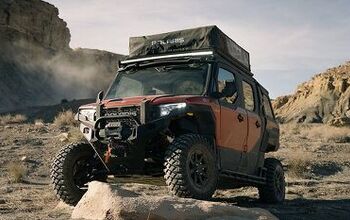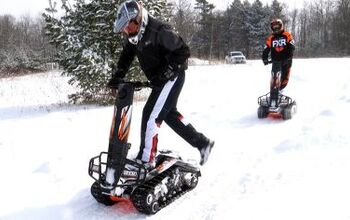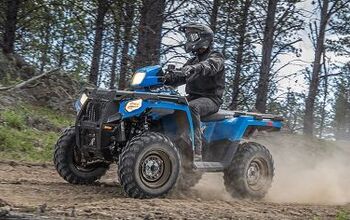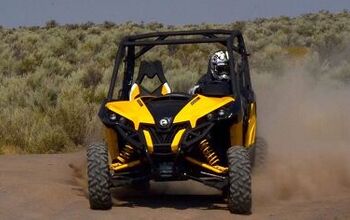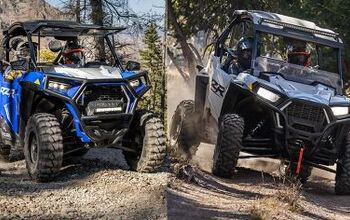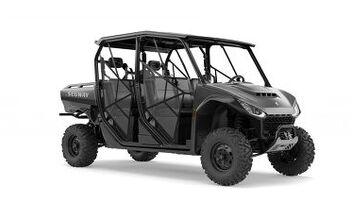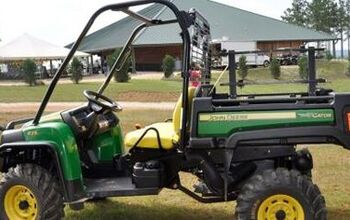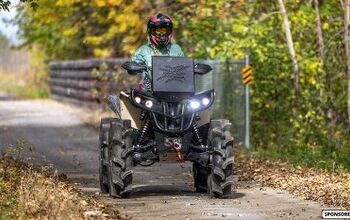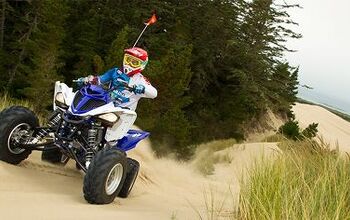2018 Polaris RZR RS1 vs. 1990 Honda Pilot FL400: By the Numbers
When Polaris unveiled the ACE, people started talking about the original single-seater, the Honda Odessey. Sure, Honda totally paved the way for the concept, but there hasn’t been anything like it from Honda in years. Still when Polaris recently unveiled the high-performance Polaris RZR RS1, the interwebs started right back up with the chatter comparing to the higher-performance single seat ATV Honda ever made, the FL400 Pilot. What the heck, let’s see how they compare…by the numbers!
Fair Fight?
Nope. Come on. We’re talking about a brand-new machine versus something that hasn’t sold new for 28 years! By the way, writing that is now making me feel incredibly old, so thanks for that! Why do people make the comparison? There’s a few reasons, actually. One is to assert the notion that the RZR RS1 is not the first performance-minded single-seat ATV ever created. That much is very true.
The other reason it comes up is something that is also very true – brand loyalty. Honda carries an extreme amount of brand loyalty from consumers. If you own a Honda, chances are, you’d buy another and would defend your decision.
There is probably another reason this topic is being discussed, too. I don’t know if you’ve noticed, but people like to argue on the internet. Yeah, shocker, huh?
So About That…
2018 Polaris RZR RS1 vs. Polaris ACE 900 XC: By the Numbers
We should all be pretty aware that the RS1 has Polaris’ 999cc ProStar Twin that pumps out a pleasing 110 horsepower. This motor, like everything else, is a four-stroke. It will haul your butt from one spot to another with a severe case of the grins pretty darn fast.
Honda’s FL400 ran a 397cc single-cylinder two-stroke motor and was one of the last two-stroke ATVs Honda sold in the United States. It has a V-belt toque-converter transmission and while horsepower numbers were sketchy, this bad boy would get you rolling at 60-65 miles per hour with a huge grin on your face. It had electric start with a rope back-up and was very mildly tuned, meaning a competent two-stroke mechanic could turn it into a screamer.
Thrill Factors
Comparing suspension is interesting, and a study in how far we’ve come over the years. The Polaris RZR RS1 has 18-inches of travel from beefy Walker Evans Racing needle shocks. The front rides on dual A-arms and the rear floats on a trailing arm setup similar to what is found on high-speed desert racing trucks. While the technology in the shocks is definitely new, the basic design of the set-ups for the front and rear are not. A-arms and trailing arms have been around for a long time. Obviously now, they’re pretty refined.
The Honda had some pretty interesting technology for its time. Up front, shocks with 5.9 inches of travel rode on double wishbones. Out back, the gas-charged shocks had 7.1 inches of travel and also rode on a double wishbone set-up. Remember, this was a time when independent rear suspension was not very common. Pretty interesting to see this amount of innovation in a machine that was only available for a couple of years.
Ahead of its Time?
It’s pretty safe to say that the Honda Pilot was revolutionary compared to what else was available at the time. Unlike the Polaris RZR RS1, which like current UTVs, has gas and brake pedals, all of the controls for the Pilot were on a yoke-style steering column. There was even a set of wrist restraints that were on the yoke to keep your hands from flying out if you rolled it. And then there was a four-point seat belt system, which is something we’re just now starting to see again, although the aftermarket and even the OEMs are offering it as an accessory.
Direct Comparisons?
Looking at some other areas of direct comparison, it gets weirder. The Polaris RZR RS1 has the obvious horsepower advantage, but it weighs 1,340 pounds dry. The Honda came in at 605 pounds. Talk about a power-to-weight advantage. The Honda had the wheelbase advantage with 62.2 inches compared to the RS1’s 83 inches. But then again, the RS1 has 13 inches of ground clearance to the Pilot’s 5.3 inches.
We could keep going, but we won’t. Both machines are pretty revolutionary for their day and both represent significant advancements for single-driver UTVs. I don’t know about you, but I’d love to do a direct comparison. All I need is for Polaris to send me an RS1 and Honda to go into the vaults and find me a brand-new Pilot. I mean, I’m sure they have one somewhere, right? Along with a few crated 250Rs that they’d spare. If they want to accidentally send a Pilot SUV, too, my wife would appreciate that greatly.
Derrek's love for all things ATV started when he was a mere 11 years old, growing up on his family farm. His mom gave him and his sister a choice - get a horse, or a three-wheeler. The sister wanted the horse, and Derrek wanted the ATV. Luckily he won out, and was soon burning up the trails on a Yamaha Tri-Moto 200. By the time he was 14, he had saved enough of his own money by working on the farm and in his folks restaurant to buy a new 4-wheeler. That happened the day he and his mom were driving past the dealership and saw 1987 Banshee. His mom had no idea what he was buying, and he never looked back. He's been riding ever since, and been writing professionally for many years. He has ridden all over North America and been behind the controls of just about every machine out there. And yes, he still has his 1987 Yamaha Banshee.
More by Derrek Sigler



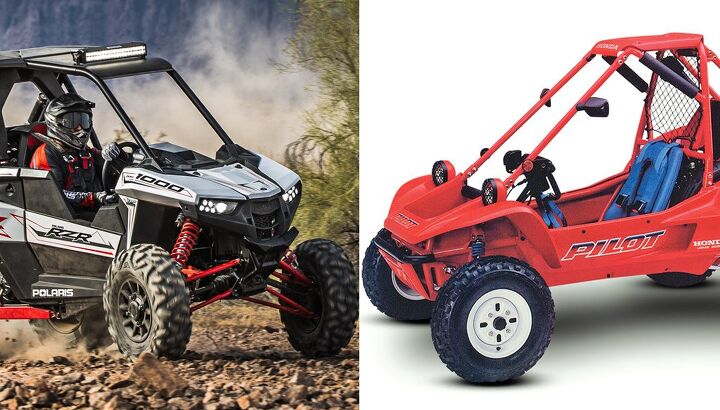
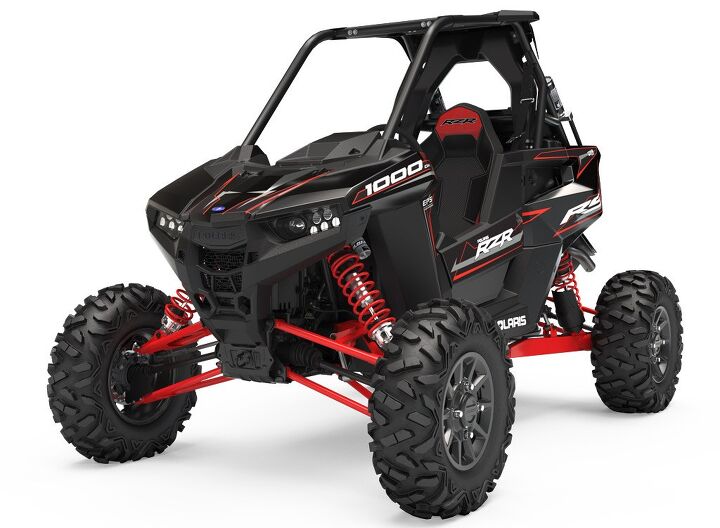










![MIT Student Develops Off-Road Wheelchair [video]](https://cdn-fastly.atv.com/media/2022/10/24/8744100/mit-student-develops-off-road-wheelchair-video.jpg?size=350x220)
![More ATVs on Ice [video]](https://cdn-fastly.atv.com/media/2022/10/24/8742964/more-atvs-on-ice-video.jpg?size=350x220)


